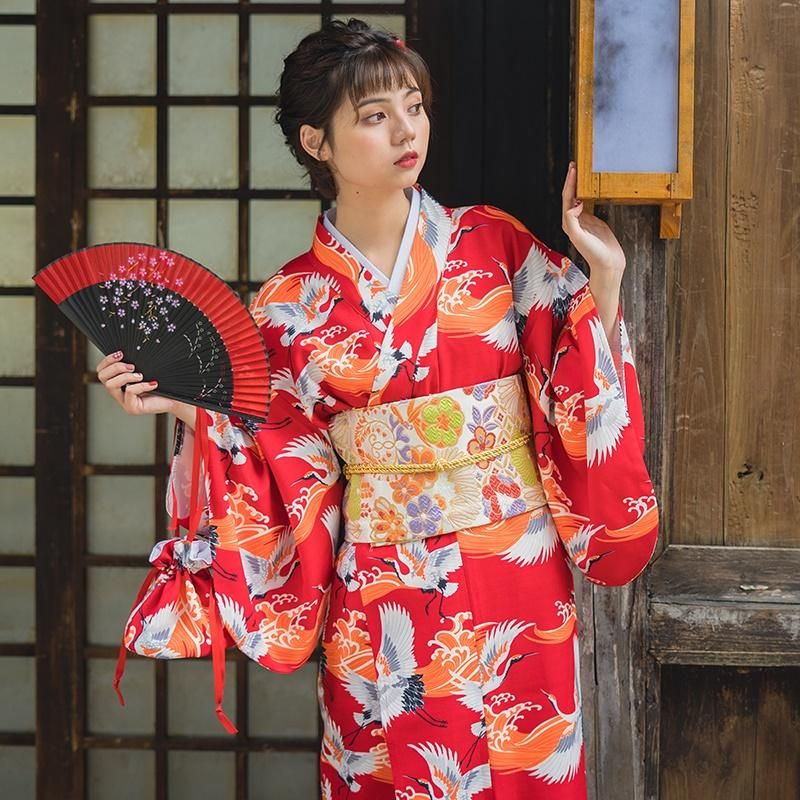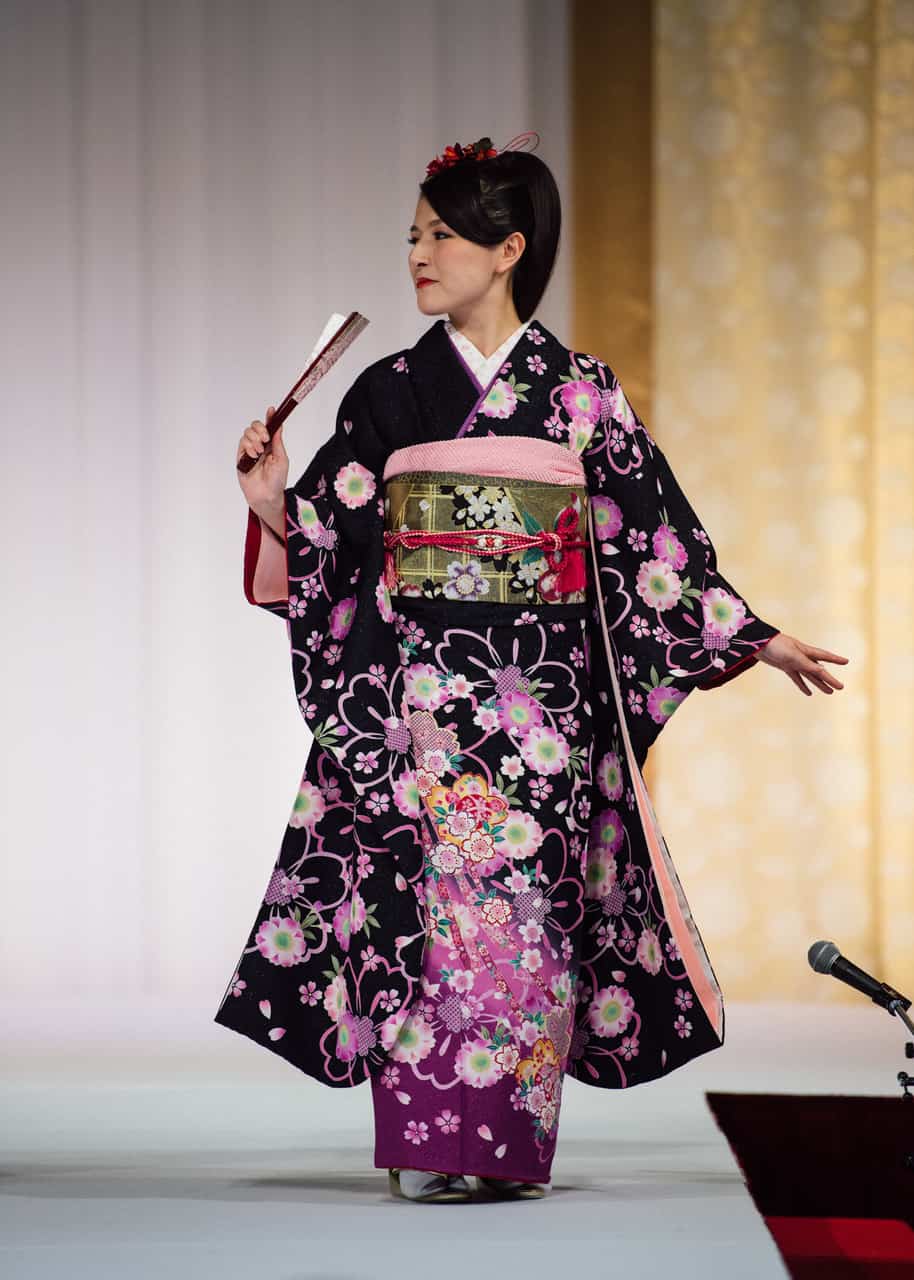I. Introduction

The kimono is a traditional garment that holds significant cultural and symbolic value in Japanese society. Throughout history, the kimono has evolved and adapted to various influences, yet it has retained its enduring appeal in modern times. This article will explore the history and evolution of the traditional kimono, as well as its beauty and elegance, by examining its styles, types, and elements of design.
II. History and Evolution of Traditional Kimono
A. Origins of the Kimono and its Traditional Design Features
The kimono can trace its origins back to ancient Japan, where it was initially worn as an undergarment beneath other layers of clothing. Over time, it became a standalone garment characterized by its T-shaped silhouette and straight seams. These design features allowed for versatility and ease of movement, making the kimono suitable for various activities.
B. Influence of Historical Periods on the Kimono’s Aesthetics
- Heian Period: Elaborate Elegance and Intricate Details
During the Heian period (794-1185), the kimono underwent a transformation into a symbol of high status and elegance. The aristocrats and nobles adorned themselves with intricately designed kimonos made from luxurious materials such as silk and satin. Elaborate embroidery, vibrant colors, and intricate patterns became defining characteristics of the Heian period kimono.
- Edo Period: Simplified Designs and Practicality
In contrast to the opulence of the Heian period, the Edo period (1603-1868) brought about a shift towards simplicity and practicality in kimono design. This was influenced by the rise of the merchant class, who favored understated elegance and functionality. The patterns and colors became more subdued, with a focus on subtle details and craftsmanship.

III. The Beauty and Elegance of Traditional Kimono
A. Styles and Types of Kimono
- Furisode: The Epitome of Elegance for Young Unmarried Women
The furisode is a highly formal and elegant kimono worn by young unmarried women on special occasions such as coming-of-age ceremonies and weddings. It is characterized by its long sleeves, which serve as a visual representation of youth and vitality. The furisode is often adorned with intricate patterns and vibrant colors, making it a striking and memorable garment.
- Houmongi: Formal Kimono for Special Occasions
The houmongi is a formal kimono often worn by married women for special events such as tea ceremonies, receptions, and graduations. Unlike the furisode, the houmongi has shorter sleeves and a more subdued design, but it is still a visually stunning garment. It often features hand-painted motifs, subtle embroidery, and a harmonious color scheme.

B. Elements of Kimono Design
- Patterns and Motifs: Reflecting Nature, History, and Symbolism
The patterns and motifs found on kimonos often reflect aspects of nature, history, and symbolism. Cherry blossoms, pine trees, and flowing rivers are common natural motifs, symbolizing beauty, longevity, and serenity. Historical motifs may include scenes from traditional tales or motifs inspired by famous artworks. Symbolic motifs, such as cranes and dragons, represent good luck and prosperity.
- Obi and Accessories: Enhancing the Beauty and Significance of the Kimono
The obi, a wide belt worn around the waist, is an essential accessory that complements and enhances the beauty of the kimono. The obi can be plain or intricately woven, adding texture and visual interest to the overall ensemble. Other accessories, such as decorative pins, sashes, and traditional footwear, complete the kimono’s ensemble and contribute to its overall elegance and significance.
- Fabric and Dyeing Techniques: The Importance of Quality Craftsmanship
The quality of the fabric and dyeing techniques used in the creation of a kimono greatly influence its beauty and durability. The finest kimonos are made from silk, which has a lustrous appearance and drapes elegantly. Traditional dyeing techniques, such as yuzen and shibori, create unique and intricate patterns on the fabric, showcasing the skill and craftsmanship of the artisans who create them.
IV. The Cultural Significance of Traditional Kimono
A. Rituals and Ceremonies

The traditional kimono plays a vital role in various rituals and ceremonies in Japanese culture. Some of these include:
- Coming-of-age ceremonies (Seijinshiki): When young people turn 20 years old, they participate in a coming-of-age ceremony to mark their transition into adulthood. For women, this is an opportunity to wear a furisode, a highly formal kimono with long flowing sleeves that signifies their youth and eligibility for marriage.
- Traditional wedding ceremonies (Shinto or Buddhist): Kimonos are also an integral part of traditional Japanese weddings. The bride often wears a white or brightly colored uchikake or shiromuku, both of which are formal kimono styles. These garments symbolize purity, and the intricate patterns and designs reflect the couple’s families and their wishes for a happy and prosperous future.
- Tea ceremonies (Chado): The tea ceremony, known as chado or the way of tea, is a cultural practice rooted in Zen Buddhism. Participants in the ceremony often wear formal kimono, such as houmongi or tomesode, to show respect and enhance the overall sense of tranquility and harmony.
B. Preserving Japanese Cultural Heritage
Efforts have been made to preserve and promote the traditional craftsmanship and techniques involved in making kimonos. These preservation efforts include:
- Maintaining traditional kimono craftsmanship and techniques: There are artisans dedicated to mastering traditional dyeing, weaving, and embroidery techniques used in kimono production. By passing down these skills through generations, they ensure that the art form is preserved and appreciated.
- Role of museums and cultural organizations: Museums and cultural organizations play a crucial role in educating the public about the history, significance, and artistry of the kimono. They organize exhibitions and workshops that allow visitors to learn about the craftsmanship involved, as well as the cultural and historical context of the kimono.
V. Kimono-Inspired Fashion and Modern Adaptations
A. Kimono as a Fashion Trend

In recent years, the kimono has gained popularity as a fashion trend outside of traditional Japanese events. Many designers and fashion houses have incorporated kimono elements into their contemporary clothing lines.
The global appreciation for kimono-inspired fashion is a testament to the garment’s timeless elegance and versatility. From the runways of Paris to the streets of Tokyo, the kimono continues to inspire designers and fashion enthusiasts alike.
B. Modern Adaptations and Fusion Styles
While the traditional kimono remains a symbol of Japanese culture, modern adaptations and fusion styles have emerged. Western influences have played a significant role in shaping contemporary kimono designs. Slimmer silhouettes, shorter hemlines, and the use of non-traditional fabrics have all been introduced to appeal to a wider range of consumers.
Additionally, there has been a growing trend of fusion styles that combine elements of the kimono with other cultural influences. This fusion can be seen in the incorporation of kimono sleeves into Western-style dresses or the blending of traditional kimono patterns with African or Indian textiles. These approaches create unique and vibrant garments that celebrate the cultural diversity and global interconnectedness of the modern world.
VI. Conclusion
The traditional kimono holds immense cultural significance in Japan, serving as a staple garment for various rituals, ceremonies, and cultural practices. Efforts to preserve and promote traditional kimono craftsmanship are essential in ensuring the continued appreciation of this cultural heritage. Additionally, the kimono’s influence has extended beyond traditional events, inspiring contemporary fashion trends and fusion styles worldwide. Whether embraced as a symbol of cultural pride or adapted to modern fashion preferences, the kimono continues to captivate with its beauty, elegance, and enduring cultural relevance.
